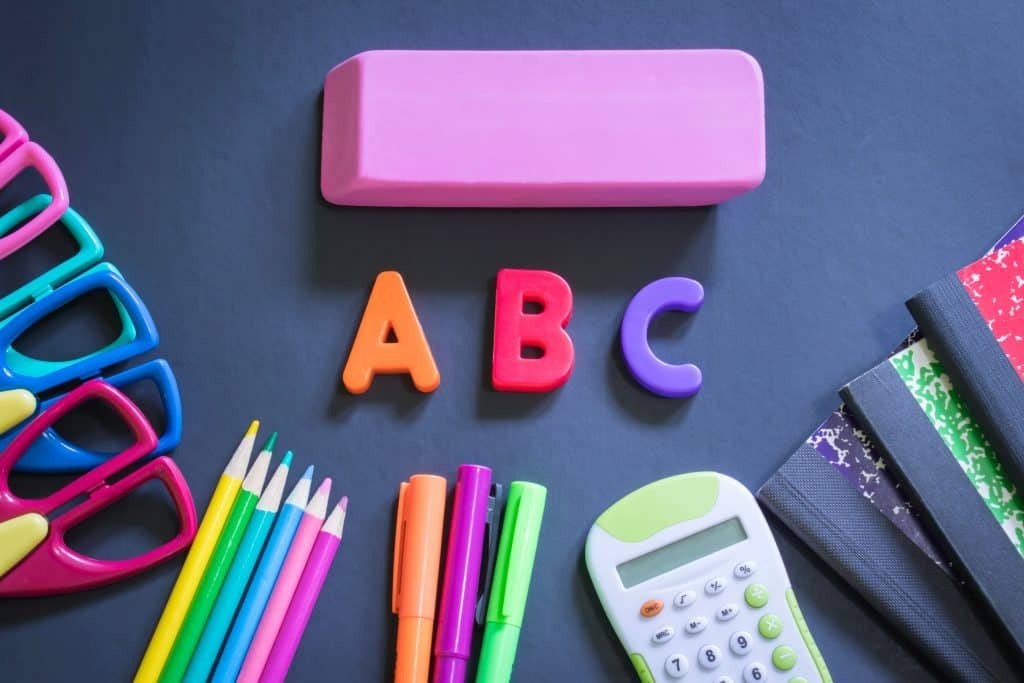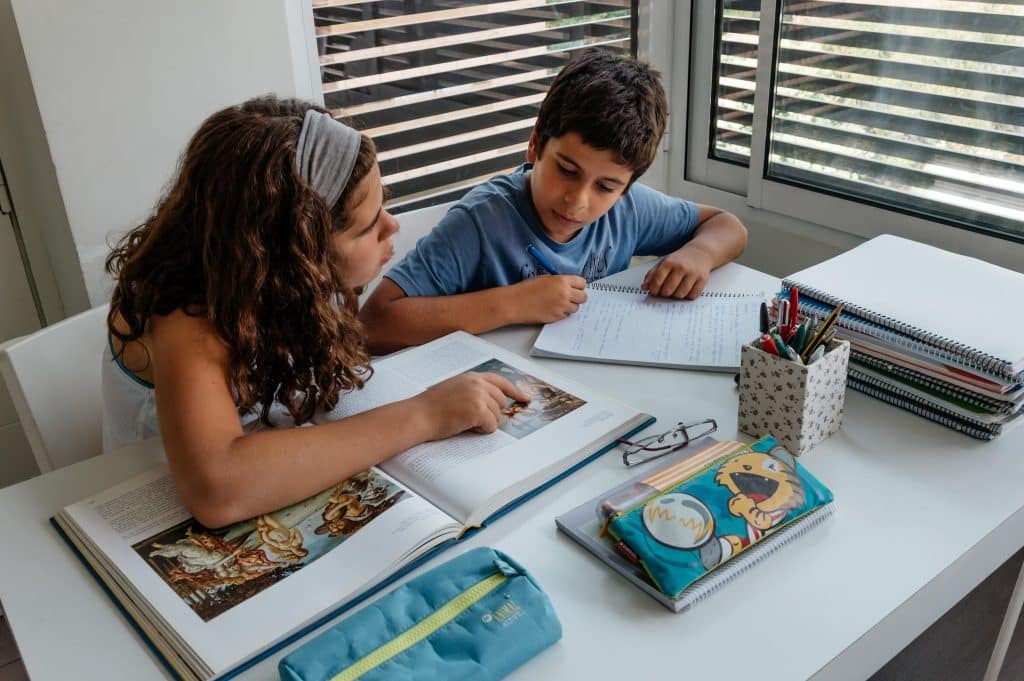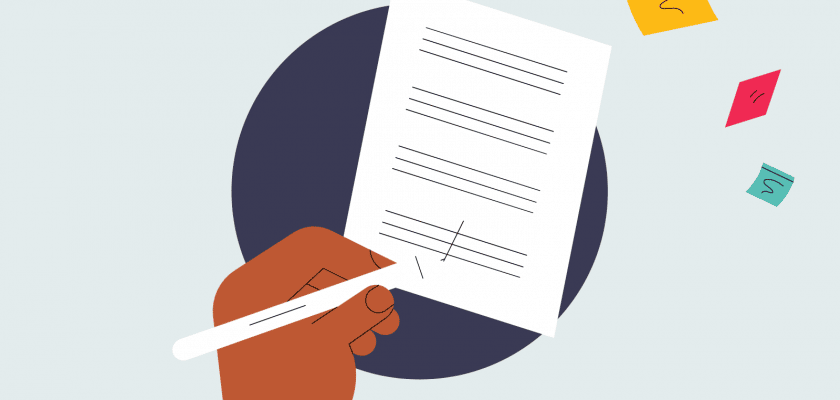Singing the alphabet song over and over again is more fun than writing lesson plans. Yes, the process can be creative, and it is more than helpful to have a clear overview of what you will do in class, but more often than not, it is a nuisance.
Writing a lesson plan is not an easy task—you need to know how to approach it and ensure you don’t leave out any essential elements. That’s where templates come in. We’ll show you what a good lesson plan template consists of, how to change your templates based on your teaching needs, and where to find high-quality, ready-made lesson plans (and templates!) that will make your life easier.
Why You Should Use a Lesson Plan Template
Your job as a teacher is to present targeted knowledge in a comprehensible and engaging way and ensure retention. This can be difficult to achieve if you don’t have a clear plan of how you’re going to approach your lessons and what you’ll do during the class, especially when working with younger students. Having a clear roadmap and knowing exactly what you’re going to do in each lesson is always a better option.
Using a template makes the lesson plan writing process easier as you don’t have to do everything from scratch or worry about leaving out any important elements. A template facilitates structuring your lesson and allows you to direct your time and efforts toward executing the lesson plan perfectly rather than creating it. A high-quality template enables you to:
- Save time while planning your lesson
- Organize your class time more efficiently
- Remember every important detail
- Have a better visual structure
In essence, a lesson plan template is a teacher’s planner. And if you’ve ever used a planner, you know how satisfying it is to fill it out and feel a bit more confident that you have things under control.
How To Make a Lesson Plan Template
When creating a lesson plan template by yourself, your approach will depend on several important factors. You can use a different lesson plan template for each subject or for a period it covers—you can have daily, weekly, monthly, or even yearly templates.
You should also consider the grade you’re teaching. E.g., if you are a high school teacher, the template you create for your needs won’t be useful for preschool lesson plans. High school lesson plan templates are usually way less colorful and allow more room for exploration and guided and independent practice parts of the lesson than the lesson plan templates for younger learners.

Regardless of the type of the lesson plan, most lesson plan templates contain the following sections:
- Lesson objectives
- Materials
- Learning activities
- Assessment methods
- Homework assignments
Lesson Objectives
Whether you’re making a plan for a single day or an entire year, your template must have the Objectives section. Lesson plan objectives help you define the outcomes of your lesson. To define a good objective for your lesson plan, you’ll need to answer questions like:
- What will students know by the end of the class?
- How will I verify whether they’ve gained new knowledge?
- What level of accuracy is needed to consider a lesson learned?
When you establish an objective, test it by using the S.M.A.R.T. formula. Your goal needs to be:
- S—Specific
- M—Measurable
- A—Achievable
- R—Relevant
- T—Time-bound
Materials
In the Materials section, you should leave enough room to list out all the materials you intend to use. If you’re teaching kids, that list tends to run long, so plan accordingly.
This section will essentially include a checklist of items such as:
- Textbooks
- Printable worksheets
- PowerPoint presentations
- Games
- Videos
- E-books
- Devices (projectors, speakers, etc.)
- Various materials like crayons, glue, paper, chalk, etc.

Source: @Jmwiehl via Twenty20
Learning Activities
A significant part of the template should be devoted to exploring the subject of the lesson, instruction, and practice with your students. Be flexible and consider that students have varying learning styles and may respond to different learning activities.
This section of your lesson plan template should consist of different activities broken into five phases of instruction:
- Introductory phase for focusing students’ attention
- Previous knowledge check
- Direct instruction of the lesson
- Guided practice
- Knowledge application
Assessment Methods
Another part of your lesson plan template should be the section where you list tools and methods for evaluating the success of your class. You need to assess whether the students achieved the lesson goal. While your brain might instinctively scream, “Quiz them!” it’s good to explore other options, too. Other common assessment methods include:
- Group activities
- Exit slips
- Drills
- Hands-on activities
- Writing assignments
- Class journal entries
- Presentations
You can also add a sub-section for self-assessment. Include a brief questionnaire and leave room to fill it out after the lesson. Ask yourself questions like:
- Was the lesson successful?
- Did the students learn?
- Were the students interested?
- How could I have made it better?
- What should I include or skip next time?
Homework Assignments
You should plan homework ahead as it’s necessary for students to synthesize knowledge and reinforce the skills learned during the lesson. This section may not be necessary for every template, depending on the grade and subject you’re teaching. You can also combine it with assessment methods or materials if it makes more sense in your circumstances.
If you’re creating a weekly template, you can leave less space just for listing the types of assignments you plan to give your students. In a daily lesson plan template, you might want to include a bigger section where you will focus on specific tasks and problems the students need to solve at home.

Source: @juanDOF via Twenty20
Lesson Plan Templates by Grade—What’s Different?
When choosing a lesson plan format for your template, you should take the age of your students into account. Different age groups require more or less advanced objectives, more materials to keep them engaged, or more diverse learning activities. For instance, a kindergarten lesson plan template should have more space dedicated to fun and interactive activities than a template used for high school lesson planning.
Check out the table below to learn about the main differences in templates by grade:
| Lesson Plan Templates by Grade | Key Differences |
| Elementary school lesson plan templates | Preschoolers and elementary students focus on building their social-emotional skills, and they’re just entering the world of structured learning. Make a template for lesson plans with more emphasis on hands-on and play-based activities instead of homework assignments or assessment methods |
| Middle school lesson plan templates | Middle schoolers have more advanced academic and behavioral objectives. You can make a template with multiple activity sections so that you can combine individual and group projects more easily |
| High school lesson plan templates | High school lessons delve deeper into the subject matter and require you to use more advanced materials and instructional methods. You’ll need a template that focuses on materials (textbooks, digital, and physical resources), as well as varying teaching strategies |
Note that you can find variations in templates even within these bigger categories. For instance, you can create different templates for lesson plans for first graders and second graders, depending on the curriculum and your student group.
Using Online Lesson Plan Templates
If you don’t want to spend time creating your own template, you can google printable lesson plan templates and find thousands of options to download for free or for a fee. The templates differ based on their layout, visual appeal, and other factors, and picking one right from the off can be challenging. While you may be attracted to the beautiful design, you might find yourself looking for additional sections in the downloaded template.
One way to pick a suitable online template is to try out different options and see which one works best for you. Even better—you can bypass the whole process of picking out a template by going for a ready-to-use lesson plan instead.
While they save you from filling out templates, good lesson plans are usually not free, and you don’t know what they’re like until you buy them. There is also the question of quality, especially with free resources. Many online lesson plans:
- Focus on the teacher (instead of on the students)
- Don’t meet curriculum standards
- Are repetitive and vague
- Don’t take into account the students’ varying learning styles and abilities
You may need to pay for dozens of different lesson plans until you find the one that works for you. On average, teachers spend $750 a year on different resources, but you don’t have to go down the same road if you choose Teach Simple.
Teach Simple—Know What You’re Buying
The point of using online materials is to save yourself the trouble of creating your own, but where is the logic in it if hunting for good online lesson plans and templates ends up costing you hours of your time and hundreds of dollars of your hard-earned money?
Teach Simple has thousands of ready-to-use, high-quality lesson plans, templates, and various other materials created for teachers by fellow teachers. Our contributors have years of classroom experience and know exactly what lessons need to look like.
And the best part is—we don’t charge per download! For a whole first month free (and an affordable monthly fee afterward), you get to browse and download any product you like from our resource library without worrying about the final cost.
Fast Access to Great Ideas for Your Next Class
If you’re not sure how to fill out your lesson plan template for the next class, give these resources a try:
- Meiosis—5E Lesson Bundle
- Animals and Their Habitats
- Global Warming Causes
- Literary Devices: Foreshadowing, Flashback, Symbolism, and Irony
- Team Handball, Gr. 4–6
- Fahrenheit 451: The Teacher’s Companion
- Practical Life Skills—Employment & Volunteering, Gr. 9–12+
- Narrative Sub Plans Prompts
- Finances and Record Keeping Lessons | Life Skills Unit
- Email Etiquette Mini Unit: Appropriate and Professional Emails
- Summer Olympic Games, Gr. 4–6
- Nervous System
- T-Rex | Interactive Science Lesson | Micro-Learning Deck
- Introduction to Chemical Reactions—5E Lesson Bundle
- Wind and Hydroelectric Energy Mini Unit
What Makes Teach Simple Different
Teach Simple helps you get your hands on top-quality materials fast, saving both money and time in the process. Our platform gives you:
- Unlimited downloads—Once you register, you can download everything you need without restrictions
- High quality and standard alignment—Our contributors are experienced teachers, and they know what it takes to make a template or a lesson plan that aligns with various teaching standards. Every posted material gets reviewed by other teachers to ensure it meets different curriculum and subject requirements
- Resource diversity—Lesson plans and templates are not the only resources you can find on Teach Simple. Our platform is dedicated to making your job easier by providing all kinds of learning materials, such as audiobooks, worksheets, projects, curriculums, graphics, e-books, games, flash cards, materials for ESL classes, etc.
- A sense of community—We give 50% of our monthly revenue back to teachers who create high-quality lesson plans and learning materials for our platform. Half of your subscription fee goes directly to them
- Special education resources—Students with special needs are often neglected, and you’ll struggle to find materials for them anywhere else. Teach Simple offers resources that go beyond standard academic topics and helps you teach your students other valuable skills

Source: @sunflowerlight via Twenty20
Teaching Is Simple When You Use Teach Simple
Whether you’re looking for a subject- or grade-specific lesson plan or template, or just an extra activity or game to make your classes more engaging, you’ll find what you need on our platform.Register for free using our 30-day trial, browse through the materials, and make unlimited downloads. You can download every template or lesson plan you need during the free trial without committing to any future subscriptions. We’re sure you will fall in love with our easy-to-use platform and top-notch resources fast.
